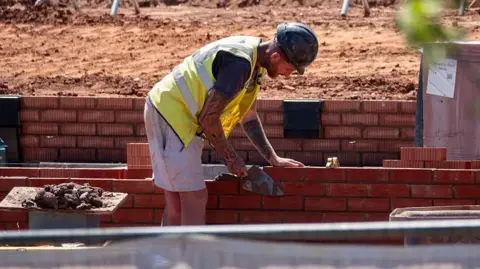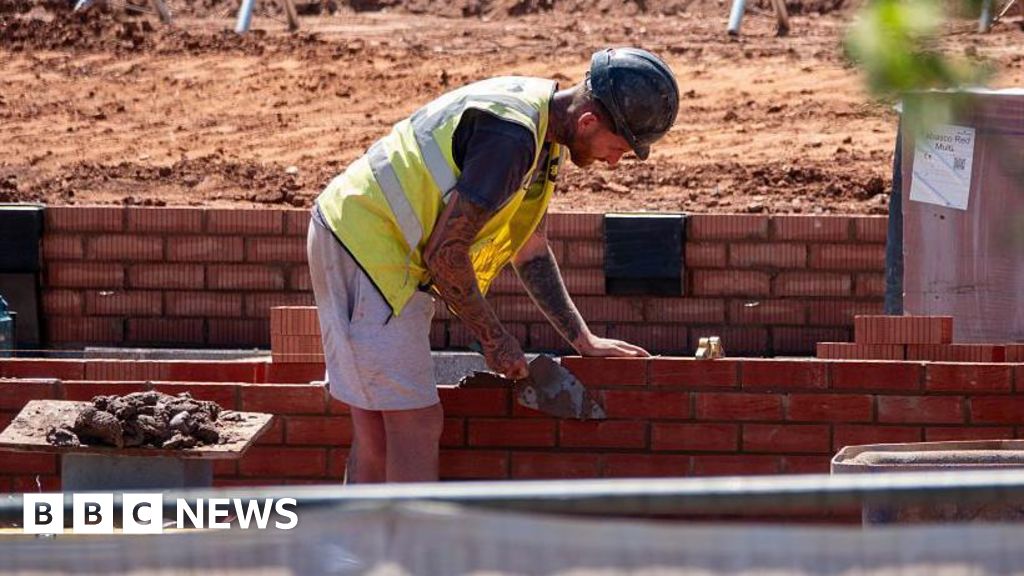Pritti Mistry & Simon BrowningBusiness reporters, BBC News
 Getty Images
Getty ImagesUK cement production has fallen to its lowest level since 1950, putting the government’s house building plan at risk, a trade body has warned.
Cement is the key binding ingredient in concrete, which is the most widely used material in the construction industry, and mortar.
The Mineral Products Association (MPA) said production levels were “increasingly under threat” due to high energy, regulatory and labour costs.
The Department for Business and Trade said it recognised challenges in the sector and its Industrial Strategy was increasing help for energy-intense companies, which include cement manufacturers.
The Labour government has pledged to build 1.5 million new homes in England by 2029 as part of efforts to solve the housing crisis and boost economic growth.
Under a separate investment strategy unveiled in June, Chancellor Rachel Reeves pledged to pour £725bn over the next decade into maintaining existing infrastructure and building new projects.
But the UK made just 7.3 million tonnes of cement in 2024, according to the MPA, which represents manufacturers of products such as asphalt and cement.
The trade body said that was about half of that produced in 1990 and similar to production levels seen when rationing was still in place following the World War Two.
MPA executive director Dr Diana Casey said the decline threatened to derail the government’s ambitions for housing, infrastructure and clean energy projects.
“[You] can’t build houses, bridges or railways without us,” she told the BBC.
“So the fact production has declined so much at a level since 1950 is worrying,” she continued, adding that it “could impact government targets like homes and hospitals and power plants that are due to be built”.
The MPA said a project such as the Sizewell C nuclear power plant could need up to 750,000 tonnes of cement and a new hospital would require nearly 8,000 tonnes.
A traditional four-bedroom home needs between three and five tonnes.
The MPA said production had fallen due to rising costs and changes to carbon taxation, which reduced market competitiveness and was a major concern to the sector.
It also highlighted the growth of cheaper cement import sales nearly tripling over the past 16 years, from 12% in 2008 to 32% in 2024.
Ms Casey said more action was needed to cut electricity prices, which were “disproportionately affecting the industry”.
“[The] UK is uncompetitive because of high costs – energy particularly – and regulatory burden because of carbon, therefore it is cheaper to import cement,” she said.
“We’re calling on the government to help put domestic production on a level playing field so that it can compete fairly with imports.”
In a statement, the Department for Business and Trade said: “We recognise the cement sector faces challenges which is why our modern Industrial Strategy is increasing support for energy-intensive firms through our Supercharger scheme, which will slash energy prices for eligible businesses.”
According to the MPA, about 40% of British cement is manufactured in the Peak District, with the rest of the production spread across the UK.
The trade body fears jobs could be at risk and “disappear in the future” if imports rise.
Rico Wojtulewicz, head of policy and market insights at the National Federation of Builders, said it was getting harder for construction firms, because there were many stalled projects which meant there was a reduced need for locally manufactured cement.
Building costs had also continued to rise, he added, which was pushing smaller builders out of the sector and driving others to find savings.
“They are all looking for better priced materials,” he said.
